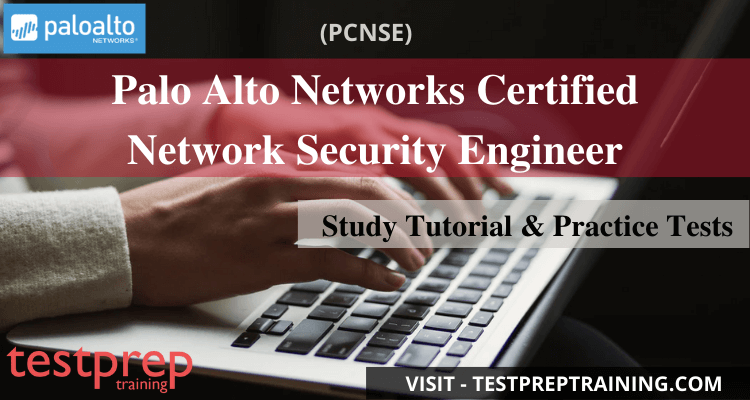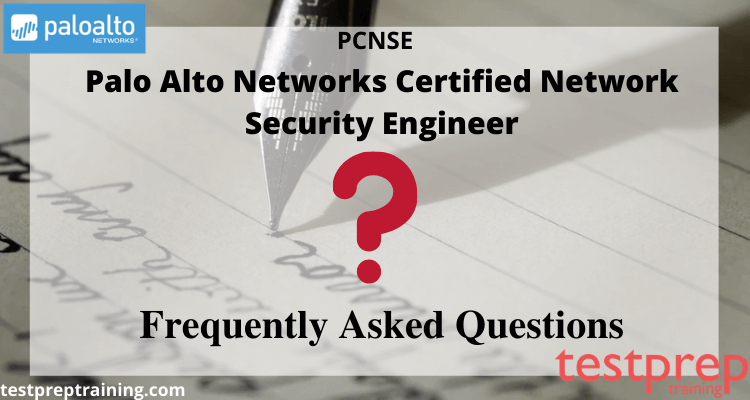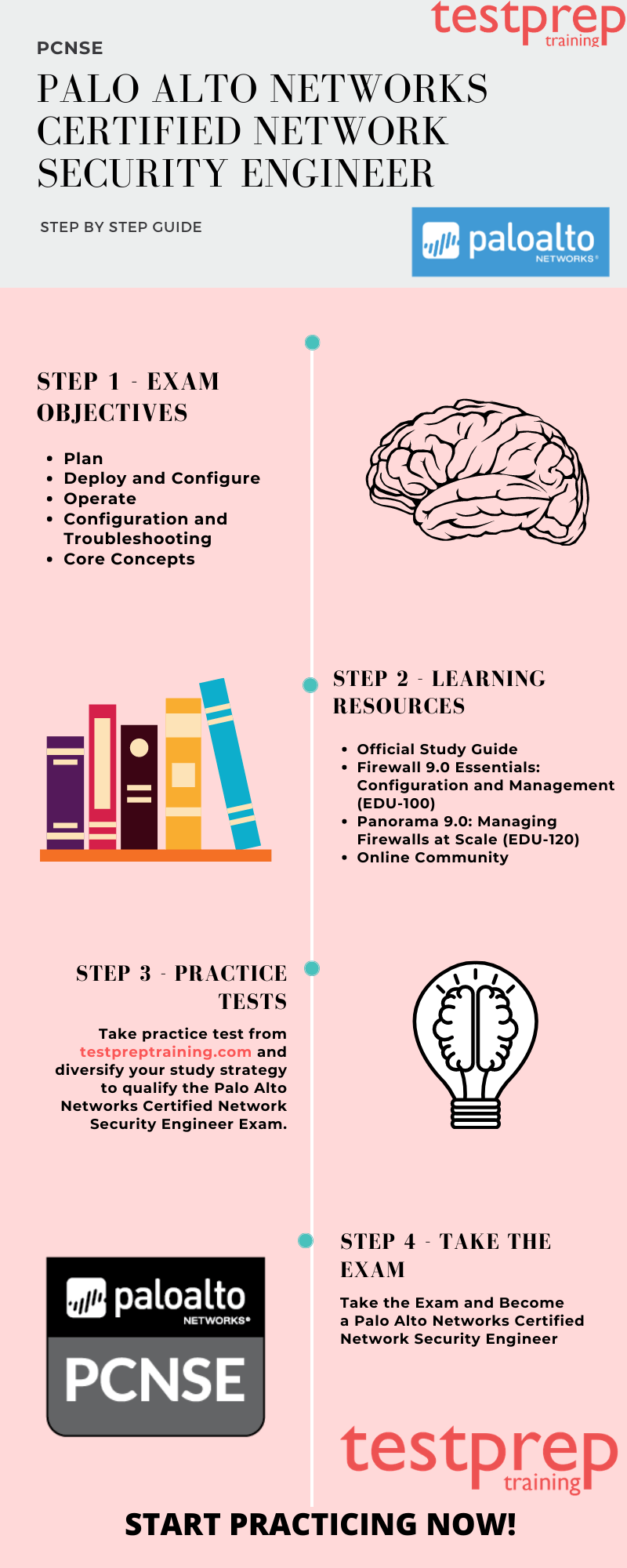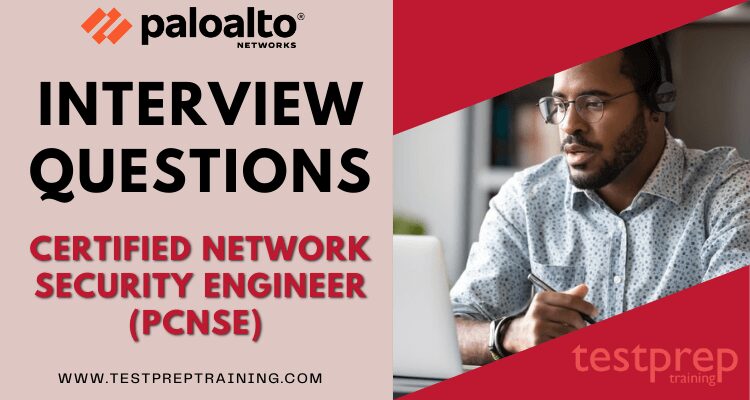PCNSE – Palo Alto Networks Certified Network Security Engineer

The Palo Alto Networks Certified Network Security Engineer (PCNSE) is a certification program offered by Palo Alto Networks for network security professionals. The PCNSE certification program validates the skills and knowledge required to design, configure, and manage Palo Alto Networks security solutions.
The PCNSE certification is important for network security professionals who want to demonstrate their expertise in Palo Alto Networks security solutions. This certification program provides a comprehensive understanding of Palo Alto Networks firewalls, threat prevention technologies, and network security best practices. Earning the PCNSE certification can enhance career opportunities and increase earning potential.
Target Audience
The target audience for the PCNSE certification program includes network security professionals, such as security engineers, network administrators, security analysts, and security consultants. These professionals typically have experience with Palo Alto Networks security solutions and want to deepen their knowledge and skills in designing, configuring, and managing these solutions. The PCNSE certification is also relevant for individuals who are responsible for the security of their organization’s network infrastructure and want to ensure they have the necessary knowledge to deploy and manage Palo Alto Networks security solutions effectively.
Recommended Knowledge and Prerequisites
To prepare for the PCNSE certification, it is recommended that candidates have a solid understanding of networking and network security fundamentals, including TCP/IP, routing and switching, and firewall technologies. It is also recommended that candidates have experience with Palo Alto Networks security solutions, including the Palo Alto Networks Firewall and Panorama management server.
In terms of specific knowledge areas, candidates should have a deep understanding of network security threats, network security protocols, and network security best practices. Candidates should also be familiar with advanced firewall configuration and management, threat prevention technologies, and Panorama management server.
There are no specific prerequisites for taking the PCNSE certification exam. However, candidates are encouraged to have experience with Palo Alto Networks security solutions and to complete relevant training and study materials prior to taking the exam. Palo Alto Networks offers a variety of training and certification resources, including instructor-led courses, self-paced online courses, and study guides, to help candidates prepare for the PCNSE exam.
Palo Alto Networks (PCNSE): Certified Network Security Engineer Interview Questions
Exam Details
- Exam Name – Palo Alto Networks Certified Network Security Engineer (PCNSE)
- Exam Duration – 80 mins
- Exam Format – Multiple Choice
- Number of Questions – 75 Questions
- Exam Fee $160 USD
- Exam Language English, Japanese
For More Details See – Palo Alto Networks PCNSE FAQ

PCNSE Exam Course Outline
The Palo Alto Networks Certified Network Security Engineer (PCNSE) certification exam covers the below-mentioned domains –
Exam Domain 1 – Plan
- Identify how the Palo Alto Networks products work together to detect and prevent threats
- Given a scenario, identify how to design and implementation of the firewall to meet business requirements that leverage the Palo Alto Networks Security Operating Platform
- Given a scenario, identify how to design and implementation of firewalls in High Availability to meet business requirements that leverage the Palo Alto Networks Security Operating Platform
- Identify the appropriate interface type and configuration for a specified network deployment
- Identify strategies for retaining logs using Distributed Log Collection
- Given a scenario, identify the strategy that should be implemented for Distributed Log Collection
- Identify how to use template stacks for administering Palo Alto Networks firewalls as a scalable solution using Panorama
- Identify how to use device group hierarchy for administering Palo Alto Networks firewalls as a scalable solution using Panorama
- Identify planning considerations unique to deploying Palo Alto Networks firewalls in a public cloud
- Identify planning considerations unique to deploying Palo Alto Networks firewalls in a hybrid cloud
- Identify planning considerations unique to deploying Palo Alto Networks firewalls in a private cloud
- Identify methods for authorization, authentication, and device administration
- Identify the methods of certificate creation on the firewall
- Identify options available in the firewall to support dynamic routing
- Given a scenario, identify ways to mitigate resource exhaustion (because of denial of service) in application servers
- Identify decryption deployment strategies
- Identify the impact of application override on the overall functionality of the firewall
- Identify the methods of UserID redistribution
- Identify VMSeries bootstrap components and their function
Exam Domain 2 – Deploy and Configure
- Identify the application meanings in the Traffic log (incomplete, insufficient data, nonsyn TCP, not applicable, unknown TCP, unknown UDP, and unknown P2P)
- Given a scenario, identify the set of Security Profiles that should be used
- Identify the relationship between URL filtering and credential theft prevention
- Implement and maintain the AppID lifecycle
- Identify how to create security rules to implement AppID without relying on portbased rules
- Identify configurations for distributed Log Collectors
- Identify the required settings and steps necessary to provision and deploy a nextgeneration firewall
- Identify which device of an HA pair is the active partner
- Identify various methods for authentication, authorization, and device administration within PANOS software for connecting to the firewall
- Identify how to configure and maintain certificates to support firewall features
- Identify the features that support IPv6
- Identify how to configure a virtual router
- Given a scenario, identify how to configure an interface as a DHCP relay agent
- Identify the configuration settings for sitetosite VPN
- Identify the configuration settings for GlobalProtect
- Identify how to configure features of NAT policy rules
- Given a configuration example including DNAT, identify how to configure security rules
- Identify how to configure decryption
- Given a scenario, identify an application override configuration and use case
- Identify how to configure VMSeries firewalls for deployment
- Identify how to configure firewalls to use tags and filtered log forwarding for integration with network automation
Exam Domain 3 – Operate
- Identify considerations for configuring external log forwarding
- Interpret log files, reports, and graphs to determine traffic and threat trends
- Identify scenarios in which there is a benefit from using custom signatures
- Given a scenario, identify the process to update a Palo Alto Networks system to the latest version of the software
- Identify how configuration management operations are used to ensure desired operational state of stability and continuity
- Identify the settings related to critical HA functions (link monitoring; path monitoring; HA1, HA2, and HA3 functionality; HA backup links; and differences between A/A and A/P)
- Identify the sources of information that pertain to HA functionality
- Identify how to configure the firewall to integrate with AutoFocus and verify its functionality
- Identify the impact of deploying dynamic updates
- Identify the relationship between Panorama and devices as pertaining to dynamic updates versions and policy implementation and/or HA peers
Exam Domain 4 – Configuration and Troubleshooting
- Identify system and traffic issues using the web interface and CLI tools
- Given a session output, identify the configuration requirements used to perform a packet capture
- Given a scenario, identify how to troubleshoot and configure interface components
- Identify how to troubleshoot SSL decryption failures
- Identify issues with the certificate chain of trust
- Given a scenario, identify how to troubleshoot traffic routing issues
- Given a scenario, identify how to troubleshoot a bootstrap install process
Exam Domain 5 – Core Concepts
- Identify the correct order of the policy evaluation based on the packet flow architecture
- Given an attack scenario, identify the appropriate Palo Alto Networks threat prevention component to prevent or mitigate the attack
- Identify methods for identifying users
- Identify the fundamental functions residing on the management plane and data plane of a Palo Alto Networks firewall
- Given a scenario, determine how to control bandwidth use on a per-application basis
- Identify the fundamental functions and concepts of WildFire
- Identify the purpose of and use case for MFA and the Authentication policy
- Identify the dependencies for implementing MFA
- Given a scenario, identify how to forward traffic
- Given a scenario, identify how to configure policies and related objects
- Identify the methods for automating the configuration of a firewall
Preparation Guide for the PCNSE Exam
To prepare for the exam, candidates must have a clear sense of judgment and organize their schedules well for the preparation. As resources and content are available in plenty but sifting through the best ones and practicing via them is crucial. The official website has a document for aspirants in a Pdf format, it has a brief description of the exam and it also suggests training methods for examinees. Candidates are expected to study from all the suggested resources and also build their own via online forums and applications that are available.

Learning Resource 1 – Official Study Guide
Going through the official study guide will not only increase your efficiency but going through the various domains mentioned, will also make you consistent in your study sessions. You’ll get to know which fields you have expertise in, and what are the areas where you must put in an effort in order to gain a firm command of that area.
Learning Resource 2 – Firewall 9.0 Essentials: Configuration and Management (EDU-100)
The Palo Alto Networks recently launched PAN-OS 9.0, of about 14 hours and 20 minutes that has more than 60 new features. It consists of a brand-new integrated DNS Security service, new hardware, expanded cloud environment support, and scalability enhancements, and a built-in tool to help customers adopt best practices. In order to support this, the Global Enablement Education Services introduced the Firewall 9.0 Essentials: Configuration and Management (EDU-110); a new self-paced digital training course with narrated and interactive modules, demonstrations, and knowledge check questions for aspirants, learners, and for everyone with curiosity. This training is majorly developed for pupils interested in becoming Security Administrators, Security Operations Specialists, Security Analysts, Security Engineers, and Security Architects.
Learning Resource 3 – Panorama 9.0: Managing Firewalls at Scale (EDU-120)
The Palo Alto Networks Education Team created the Panorama 9.0: Managing Firewalls at Scale (EDU-120) which is an online, self-paced technical training course for pupils who wish to appear for the PCNSE. The objective of this training course is to help examinees achieve in-depth knowledge about how to configure and manage their Palo Alto Networks Panorama management server.The duration of this course is 5 hours and 52 minutes. It includes Narrated, animated and interactive content with demonstrations and knowledge check questions. Aspirants who plan to become Security Administrators, Security Operations Specialists, Security Analysts, Security Engineers and Security Architects are suggested to attain this training.
Learning Resource 4 – Online Community
Candidates can be a member of an online community as aspirants and learn the updates through it and engage with the community, they can also experience a lot more than just studying, learning, and exchanging words. The community aids its members too. Every community has its own set of benefits for their pupils and members.
Learning Resource 5 – Practice Tests
Preparations are incomplete without the practicing part in it. Practise helps candidates evolve emotionally, mentally, and physically to be ready for the exam. It helps to tackle issues like anxiety, stress, overconfidence and soothes the aspirants emotionally. Practicing tests also helps in improving memory and creates a healthy flow of information. The practice also trains the muscles of hands and arms to write/type/ dead with adequate speed. Thus, candidates are also encouraged and recommended to practice. Also, practice tests are available on the official exam website for the candidates.
Best practices for configuring and managing Palo Alto Networks firewalls
- Follow the security best practices recommended by Palo Alto Networks for configuring and managing firewalls.
- Enable security features such as URL filtering, threat prevention, and application control to enhance network security.
- Use the Palo Alto Networks Panorama management server to centralize firewall management and configuration.
- Implement security policies that are based on user identity and application usage to provide more granular access control.
- Regularly update firewall software and security content to ensure protection against the latest security threats.
- Use logging and reporting features to monitor network traffic and detect security issues.
- Implement high availability solutions to ensure that network traffic is not interrupted in the event of a firewall failure.
- Train your staff to understand and follow security policies and procedures to minimize the risk of human error.
Tips for passing the PCNSE exam:
- Review the exam objectives and study materials provided by Palo Alto Networks.
- Attend relevant training courses to gain hands-on experience with Palo Alto Networks security solutions.
- Practice configuring and managing Palo Alto Networks firewalls in a lab environment.
- Take practice exams to familiarize yourself with the format and difficulty level of the PCNSE exam.
- Understand the underlying concepts and principles behind network security and Palo Alto Networks solutions, rather than just memorizing specific details.
- Use the reference materials provided during the exam to quickly look up information if needed.
- Pace yourself during the exam and allocate enough time to review your answers before submitting the exam.
- Don’t get stuck on difficult questions; move on to easier questions and come back to difficult ones later if time allows.


